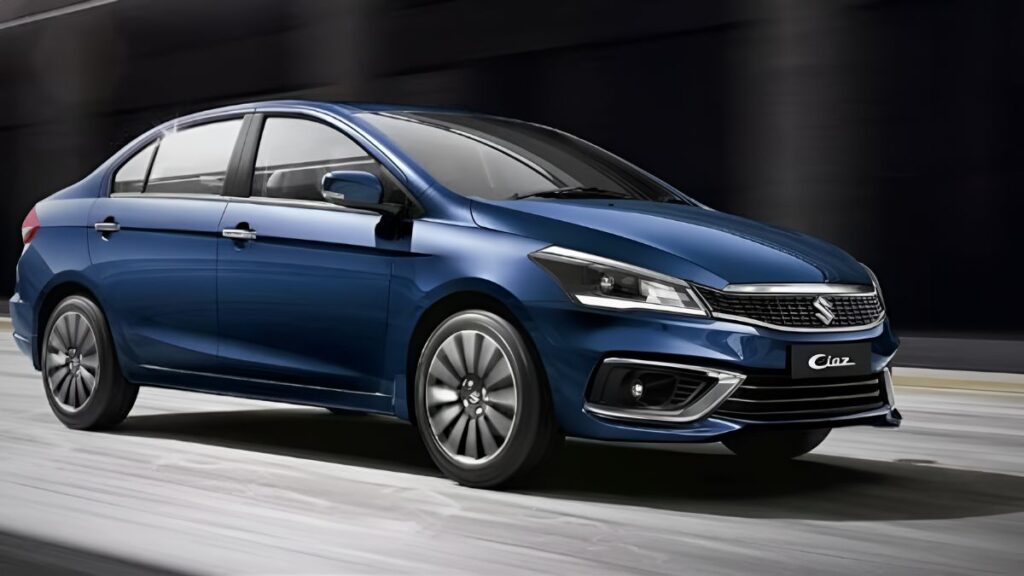Maruti Suzuki to Discontinue Ciaz by April 2025: Market Craze Towards SUVs to Blame?

Sedan Segment Shrinks, Maruti Ciaz Faces the Axe
Maruti Suzuki is set to phase out the Ciaz by April 2025, as declining sales and an industry-wide shift toward SUVs take a toll on the once-popular sedan. According to industry insiders, production will end by March 2025, with sales ceasing shortly after. While Maruti Suzuki has officially denied the reports, multiple sources have reported that the model’s days are numbered.
Why is the Ciaz Being Discontinued?
The Ciaz, launched in 2014 as a replacement for the SX4, was once a strong competitor in the midsize sedan segment, frequently outselling rivals like the Honda City and Hyundai Verna. However, changing consumer preferences and Maruti Suzuki’s evolving strategy have gradually pushed the Ciaz to the sidelines.
1. Declining Sedan Market Share
India’s love for sedans has dwindled over the years. In 2015, sedans made up 20% of the car market; by 2024, this number had shrunk to less than 10%. Meanwhile, SUVs have surged in popularity, now commanding over 50% of passenger vehicle sales. This drastic shift has led to a steady decline in the midsize sedan category, which now features just five models, down from nine in 2017.
Maruti Suzuki, which once dominated this space with a market share of 35-40% in 2017-18, has now fallen to just 11%. Competitors like the Volkswagen Virtus, Skoda Slavia, and Hyundai Verna have taken the lead, while the Ciaz has struggled to keep up.
2. Dwindling Sales Figures
Sales figures paint a grim picture for the Ciaz. Monthly sales dropped to just 659 units in October, 597 in November, and 464 in December 2024. In the first nine months of FY25, total sales reached 5,861 units, marking a 34% year-on-year decline—outpacing the segment’s overall slowdown. This steep decline signals that the Ciaz is no longer a priority for buyers in a market increasingly dominated by SUVs.
3. The Diesel Misstep
One of the key turning points for the Ciaz was Maruti Suzuki’s decision to exit the diesel segment in 2020. This move came just a year after the company had developed its own 1.5 DDiS diesel engine. Unable to meet BS6 emission norms, the diesel variant was scrapped, leaving the Ciaz with only a 1.5L petrol engine. This decision proved costly, as diesel accounted for 30% of the model’s sales at the time.
4. Lack of Modern Features
Unlike its competitors, the Ciaz failed to receive significant updates. While rivals introduced features such as Advanced Driver Assistance Systems (ADAS), sunroofs, digital instrument clusters, and turbo-petrol engines, the Ciaz stuck with its naturally aspirated petrol engine, which lacked the refinement and power that modern buyers seek.
ALSO READ | Explained: Why These 5 Modern Car Features Are a Complete Waste of Money
5. SUV-Focused Strategy
Maruti Suzuki has shifted its focus entirely toward SUVs, with models like the Grand Vitara, Jimny, and Fronx leading its sales growth. Even within the premium Nexa showrooms, SUVs have taken center stage, while the Ciaz has received minimal marketing attention.
Will There Be a Replacement for the Ciaz?
No. Maruti Suzuki has no plans to launch a successor to the Ciaz, signaling its complete exit from the midsize sedan segment. This aligns with an industry-wide trend where SUVs are becoming the dominant choice, pushing sedans further into the background.
With the Ciaz’s discontinuation, Maruti Suzuki is cementing its SUV-focused approach, adapting to the changing dynamics of India’s automobile market. For sedan lovers, this marks the end of an era—but for Maruti, it’s a strategic move toward a more lucrative future.







